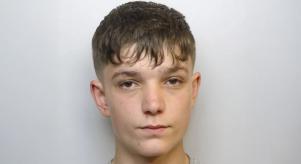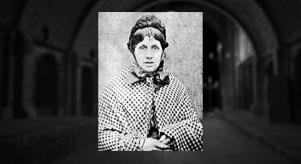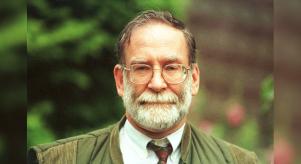
The intrigue of The Black Dahlia murder
It was early in the morning of the 15th of January, 1947. Betty Bersinger and her young daughter were out taking a stroll in the neighbourhood of Leimert Park in Los Angeles, California. As they walked and talked, Betty saw something out of the corner of her eye. It was what appeared to be two halves of a tailor's mannequin. She walked toward it and took a closer look. It wasn't a mannequin. Although it was in two halves. It was the body of 22-year-old Elizabeth Short.
She had been cut clean in half at the waist.
72 years on from the day that ‘The Black Dahlia’ was found bisected, let’s look back at the infamous murder and what made - and makes - it just so grimly fascinating. While we’re looking back we’ll cast our suspicious eyes over the line-up of suspects and examine one man with particularly strong ties to the case. A man suspected of the crime but none other than his own son… A former LAPD homicide detective.
But first? Let’s start with the basics, shall we?
The crime
The official cause of Elizabeth Short's death was recorded by the Los Angeles County coroner Dr. Frederick Newbarr as 'haemorrhage and shock due to concussion of the brain and lacerations of the face.’ But that doesn’t begin to explain what happened to the poor woman who would go on to be known as The Black Dahlia.
Here’s where you stop reading if you’re squeamish, by the way…
Short hadn’t been killed at the scene, the lack of blood showed that. She’d also been cleaned post-mortem too, the lack of blood on her body showed that too. There must have been blood somewhere, though. And lots of it. Only, not only had she been cut completely in half by what the police believe was a butcher’s knife (no murder weapon was ever recovered), but her intestines were mostly pulled out and arranged in a neat pile underneath her buttocks.
It doesn’t end there.
Her mouth had been cut from ear to ear in a grotesque ‘Glasgow smile’. Her nipples had been sliced off and her vagina filled with grass and her own severed flesh. Her mouth was packed full of faeces. There was also signs of anal dilation and laceration. Her body was covered in various other cuts. Thankfully, it seemed that most of these horrific injuries and humiliations were inflicted after Elizabeth’s death.
People die all the time. The newspapers of the time were full of gory stories of bloody murders and general carnage. Los Angeles in the late 1940s wasn’t exactly harking back to its ‘glory days’ of the old Wild West when LA’s contribution to the American Frontier was almost nothing but murder. But things were more violent than they are today. The murder rate across America in 1947 was6.1 people for every 100,000 deaths. That’s over 20% more murders in the USA than today.
So homicide isn’t - and wasn’t - particularly shocking in and of itself. And coming just two years after the atrocities of World War Two and everything that came with that, a woman’s dead body - while unpleasant - shouldn’t shock a nation, should it? Well, no. Not ordinarily. But there was very little of the ordinary about the Black Dahlia case.
There were a few major reasons that the case struck such an enormous chord with the collective consciousness of America…
It’s glamorous - An aspiring actress who lives in Hollywood is brutally slain by an unknown assailant. It’s the plot of a Raymond Chandler novel. Few could resist it.
It’s salacious - Elizabeth Short was an aspiring actress, but she was also known to spend time with men in exchange for gifts and money. While not quite a sex worker, Short did what she needed to do to pay her rent. She was also quite beautiful. Beautiful women tend to make headlines when they’re killed. Especially given the circumstances here.
It’s gruesome - For all the various interesting and odd elements to this case, the most eye-catching and memorable aspect of it is the bizarrely ritualistic butchering and severing of Short’s body into two. The shocking brutality of the crime wasn’t easy to shrug off for LA, or America in general. After all, it’s not every day that a pretty young woman is cut in half and left on the sidewalk.
It’s unsolved - Aside from the rather obvious tabloid factors that make the Black Dahlia case just so fascinating, perhaps the biggest factor in its endearing lure comes from its inherent mystery. The fact that it remains unsolved provides something of an enigmatic air to the case. Nothing intrigues the public more than famously unidentified killers, after all. Just try asking Jack the Ripper,the Zodiac or The Monster of Florence.
The Suspects
The LAPD struggled hugely with the case. It wasn't for a lack of suspects, though. At one point there were 192 suspects in total. More than 60 people confessed to Short's murder too. So police had plenty of ideas and theories as to who was behind the increasingly famous Black Dahlia murder. So too would writers and journalists down the years, include L.A Times Publisher, Norman Chandler, former mortician assistant's Leslie Dillon and Hollywood nightclub owner, Mark Hansen. Due to the horrific nature of the crime, and how the body was cut in two and disfigured, several doctors were amongst the suspects. But one doctor whose name only came to light decades later - Dr. George Hodel - was perhaps the most fascinating suspect of all...
George Hodel & his suspicious son
In 1991, Los Angeles Police Department detective Steve Hodel was sorting through some paperwork left by his father who had recently died. George was an unloving man who left the family when Steve was only nine years of age, so Steve was able to sift through the notes, letters and photographs rather dispassionately and with little interest. Until he noticed a picture of a raven-haired young woman with a recognisable face. It was the world famous Black Dahlia woman. It was Elizabeth Short.
There wasn’t just one photo, though. There were many. It was clear his father had known the woman. Confused as to the link, Steve looked further into the connection and discovered that letters sent to the police and press from 'The Black Dahlia Avenger', someone claiming to be Elizabeth Short’s killer, featured handwriting that had a striking resemblance to his late father's.
Eventually, Hodel began documenting his evidence online, posting everything he found onto his website. In 2006 he would publish a book about his suspicions called ‘Black Dahlia Avenger: A Genius for Murder’. He has since written two further books on the subject and even a couple implicating Dr George Hodel in the Zodiac killings.
According to Hodel Jr., George was the LAPD's main suspect in the Black Dahlia case and even confessed at one point. Later killing his secretary to keep the secret from getting out. He told this to True crime author and journalist Michael Fleeman and the website True Crime Page in 2017:
'There are police reports that not only established that my father was the prime suspect and knew and dated Elizabeth Short prior to the murder, but showed they had his actual confessions on tape to the Dahlia murder. He said: “Supposin’ I did commit the Black Dahlia murder. They can’t prove it now, my secretary is dead.” He confessed in detail to how he overdosed his secretary and made it look like a suicide.'
Did George Hodel kill Ms. Short? His detective son certainly seems pretty convinced.
The Truth?
So what are we to make of The Black Dahlia murder, then? Well, we’re left thinking what everyone was left thinking on January 15th, 1947 - that it was a sick, sick crime. A brutal crime. An unforgivable crime.
What was the truth? Who was behind the grotesque murder? We’ll likely never know. Was it one of the suspects from that list? Hodel maybe? Elizabeth Short’s murderer may well have even been someone - a serial killer? - not even on the LAPD’s radar...
Perhaps the only solace we can take is that whoever cut poor Elizabeth in half is almost certainly now dead themselves. It’s a small mercy, but we’ll take it.




